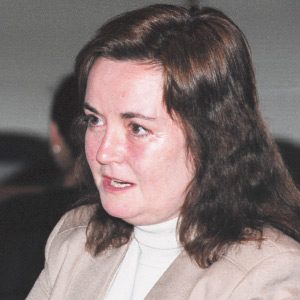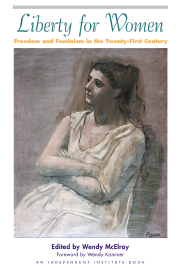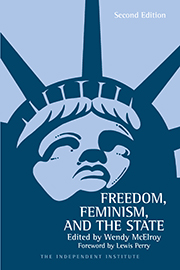Is it the new 1-in-4 statistic?
I don’t mean the widely-circulated ‘1-in-4 women will be raped in their lifetime’ but a statistic that suggests ‘1-in-4 accusations of rape are false.‘
For a long time, I have been bothered by the elusiveness of figures on the prevalence of false accusations of sexual assault. The crime of ‘bearing false witness’ is rarely tracked or punished, and the context in which it is usually raised is highly politicized.
Politically correct feminists claim false rape accusations are rare and account for only 2 percent of all reports. Men’s rights sites point to research that places the rate as high as 41 percent. These are wildly disparate figures that cannot be reconciled.
This week I stumbled over a passage in a 1996 study published by the U.S. Department of Justice: Convicted by Juries, Exonerated by Science: Case Studies in the Use of DNA Evidence to Establish Innocence After Trial.
The study documents 28 cases which, “with the exception of one young man of limited mental capacity who pleaded guilty,” consist of individuals who were convicted by juries and, then, later exonerated by DNA tests.
At the time of release, they had each served an average of 7 years in prison.
The passage that riveted my attention was a quote from Peter Neufeld and Barry C. Scheck, prominent criminal attorneys and co-founders of the Innocence Project that seeks to release those falsely imprisoned.
They stated, “Every year since 1989, in about 25 percent of the sexual assault cases referred to the FBI where results could be obtained, the primary suspect has been excluded by forensic DNA testing. Specifically, FBI officials report that out of roughly 10,000 sexual assault cases since 1989, about 2,000 tests have been inconclusive, about 2,000 tests have excluded the primary suspect, and about 6,000 have ‘matched’ or included the primary suspect.”
The authors continued, “these percentages have remained constant for 7 years, and the National Institute of Justice’s informal survey of private laboratories reveals a strikingly similar 26 percent exclusion rate.”
If the foregoing results can be extrapolated, then the rate of false reports is roughly between 20 (if DNA excludes an accused) to 40 percent (if inconclusive DNA is added). The relatively low estimate of 25 to 26 percent is probably accurate, especially since it is supported by other sources.
Before analyzing the competing figures, however, caveats about the one just mentioned are necessary.
First, the category of ‘false accusations’ does not distinguish between accusers who lie and those who are honestly mistaken. Nor does it indicate that a rape did not occur, merely that the specific accused is innocent.
Thus, there is a drive by voices for reform, like the Innocence Institute, to improve eyewitness identification techniques within police departments.
For example, the Innocence Institute suggests “Police should use a ‘double-blind’ photo identification procedure where someone other than the investigator—who does not know who the suspect is—constructs photo arrays with non-suspects as fillers to reduce suggestiveness.”
Second, even if false accusations are as common as 1-in-4, that means 75 percent of reports are probably accurate and, so, all accusations deserve a thorough and professional investigation.
Third, the 1-in-4 figure has ‘fuzzy’ aspects that could influence the results. For example, Neufeld and Scheck mention only sexual assault cases that were “referred to the FBI where results could be obtained.”
It is not clear what percentage of all reported assaults are represented by those cases. As well, the terms ‘rape’ and ‘sexual assault’ are often used interchangeably, especially when comparing studies, and it is not clear that they are always synonyms for each other.
Nevertheless, the FBI data on excluded DNA is as close to hard statistics that I’ve found on the rate of false accusations of sexual assault.
Where do the other figures come from and why is there reason to doubt them? Let me consider the two statistics that I have encountered most often.
“Two percent of all reports are false.”
Several years ago, I tried to track down the origin of this much-cited stat. The first instance I found of the figure was in Susan Brownmiller’s book on sexual assault entitled "Against Our Will" (1975). Brownmiller claimed that false accusations in New York City had dropped to 2 percent after police departments began using policewomen to interview alleged victims.
Elsewhere, the two percent figure appears without citation or with only a vague attribution to “FBI” sources. Although the figure shows up in legislation such as the Violence Against Women Act, legal scholar Michelle Anderson of Villanova University Law School reported in 2004, “no study has ever been published which sets forth an evidentiary basis for the two percent false rape complaint thesis.”
In short, there is no reason to credit that figure.
“Forty-one percent of all reports are false.”
This claim comes from a study conducted by Eugene J. Kanin of Purdue University. Kanin examined 109 rape complaints registered in a Midwestern city from 1978 to 1987.
Of these, 45 were ultimately classified by the police as “false.” Also based on police records, Kanin determined that 50 percent of the rapes reported at two major universities were “false.”
Although Kanin offers solid research, I would need to see more studies with different populations before accepting the figure of 50 percent as prevalent; to me, the figure seems high.
But even a skeptic like me must credit a DNA exclusion rate of 20 percent that remained constant over several years when conducted by FBI labs. This is especially true when 20 percent more were found to be questionable.
False accusations are not rare. They are common.









